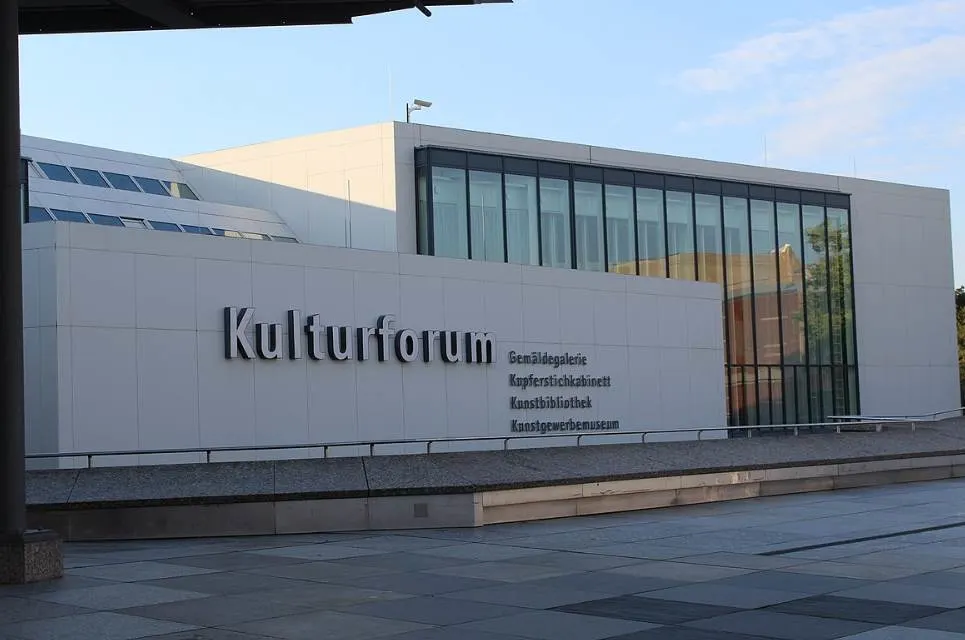It’s hard to believe that this incredible painting by one of the most famous Early Netherlandish painters in history is not larger than a sheet of paper.
Jan van Eyck (1390-1441) was one of the first artists of the Renaissance who mastered using oil. This allowed him to work slowly and add an incredible amount of detail to his paintings.
While he produced monumental works of art, some of his most stunning works are relatively small, including this one.
In this article, you’ll discover some of the most interesting facts about Madonna in the Church by Jan van Eyck, an incredible masterpiece by the artist.
1. It was probably completed during the final years of the artist’s life
Jan van Eyck was born in Maaseik (Maaseyck back then), a city in modern-day Belgium, and his name is a reference to his place of birth. It’s unknown when exactly he was born with estimates ranging from 1380 to 1390.
He lived and worked in The Hague, Lille, and eventually settled in Bruges in 1429. Here he became the court painter of Philip the Good, Duke of Burgundy (1396-1467), and was also sent on diplomatic missions of the Duke.
Throughout his career, he worked using oil, a relatively new medium that allowed him to distinguish himself from other artists by adding incredible levels of detail.
He didn’t invent oil painting, but certainly was the first to master it on a level unseen before. This particular work is a testimony to that.
Although the painting isn’t dated, today it’s generally accepted that Jan van Eyck completed Madonna in the Church somewhere between 1438-1440. This makes it one of his final paintings as he passed away on July 9, 1441.
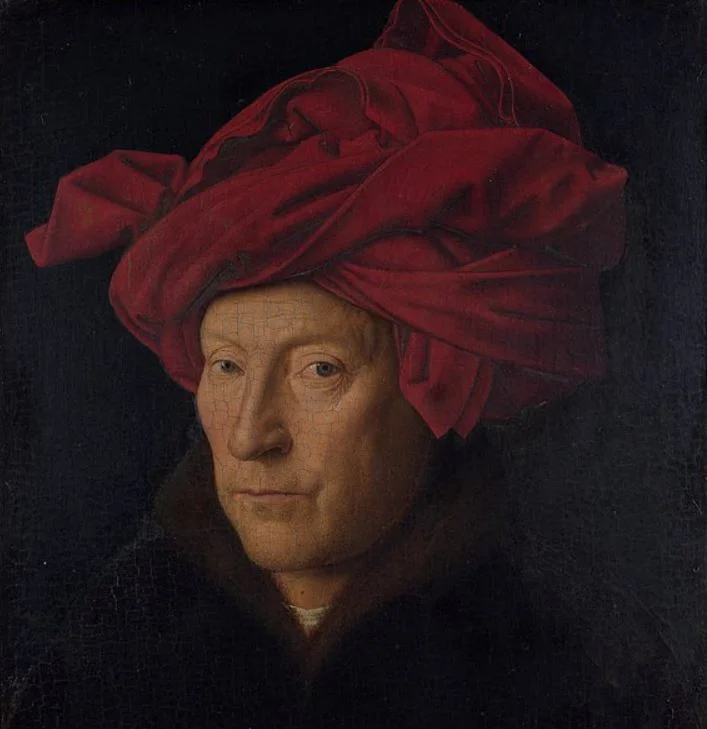
2. It depicts the Virgin and Child in the interior of a Gothic cathedral

The Virgin Mary and her child Jesus Christ were a common subject in the oeuvre of van Eyck. They are often depicted in the lavish interiors of a chapel or church.
This painting depicts Mary as the Queen of Heaven as she wears a magnificent crown full of jewels. Angels can be seen singing in a doorway in the background.
The painting was completed in such a way that it appears as if the viewer is staring through the window of a Gothic cathedral, the common type of architecture in van Eyck’s time.

3. It’s probably an imagined building and reveals the artist’s architectural knowledge
The artist of the Northern Renaissance didn’t always depict Gothic architecture as several of his paintings depict the Virgin in Romanesque buildings, the robust style of the Middle Ages.
The Annunciation (1434-1436) and the Dresden Triptych (1437) are examples of this. The idea behind this was to make the church resemble the Temple of Jerusalem.
He also included scenes from the Old Testament to make this historical setting more accurate. This work features scenes from the life of Mary carved into the architectural details of the Gothic interior.
The pointy arches and windows in combination with the niches and barrel vaults are all elements that can be found in Gothic cathedrals.
Art historians have suggested many buildings that could have served as a source of inspiration. The conclusion is that it’s an imaginary building which is a testimony to the architectural knowledge of the artist.

4. Mary is disproportionately large compared to her surroundings
The light comes from several windows on the left and ends up on the floor just behind Mary. This is a sign of the presence of God in the church.
Other iconography includes the crucifix in the background which serves as an omen to the fate of the child. It occupies about the same space as the child himself which gives us a sense of perspective.
Just like in his other works, van Eyck didn’t paint the Virgin and Child realistically. She’s oversized compared to her surroundings as she takes up a large part of the cathedral’s nave.

5. The pose resembles a type of Byzantine art from the 13th century
One of the main reasons why art historians believe that this painting was one of the final Madonna and Child paintings by Jan van Eyck is because of the Virgin’s positioning.
Her pose resembles that of Madonna at the Fountain (1439), a painting that is signed and dated by the artist.
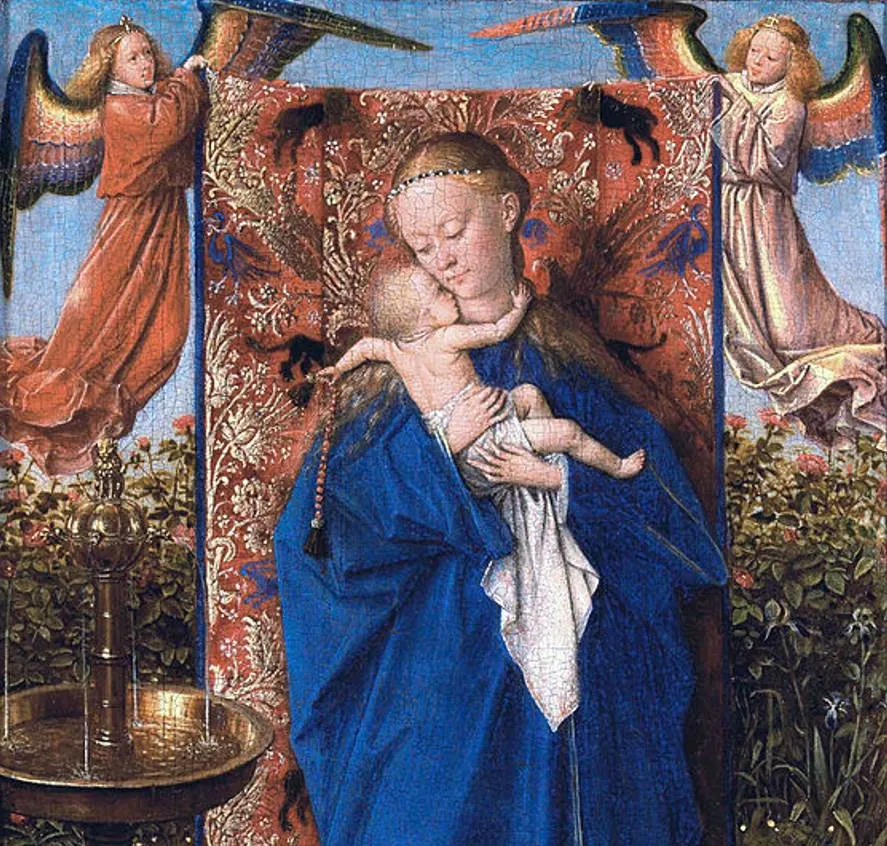
A link has been made to paintings that were imported to Northern Europe from Italy which show signs of Byzantine influences.
These paintings depict the Madonna in the so-called Eleusa pose in which she holds her child Jesus Christ closely to her cheek.
One of the best examples is the so-called “Cambrai Madonna” (1340), an Italo-Byzantine work of art that became highly influential in Northern Europe in the early 15th century.
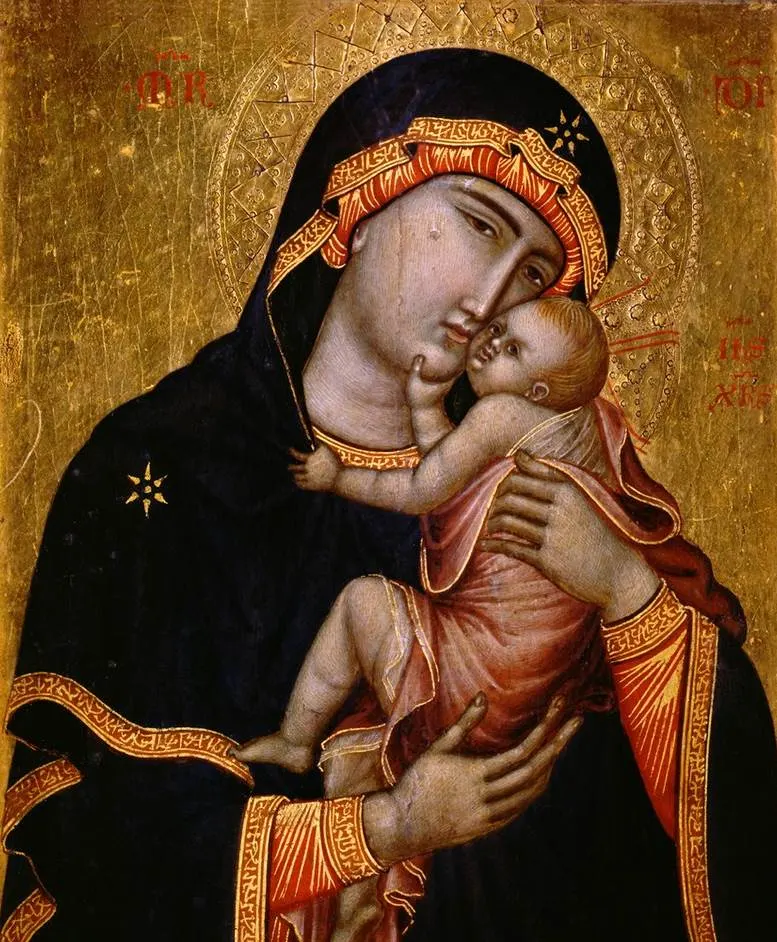
6. The painting was probably the left panel of a lost diptych
The fact that the frame of the Madonna in the Church features clasps is enough evidence that it was once hinged to another painting.
It’s likely that the painting was part of a diptych that could be closed. The small size of the work possibly meant that it was commissioned by a patron for devotional purposes.
Jan van Eyck completed several other paintings for donors in which they kneel in front of the Madonna and Child.
Some of the most notable works are “Madonna of Chancellor Rolin” (1435) and the magnificent “Virgin and Child with Canon van der Paele” (1434–36).
The right panel is lost but several copies were made in the 15th century which depict the right panel featuring a kneeling donor.
The most notable example is “Madonna and Child with a Portrait of Abbot Christiaan de Hondt” (1499) which was completed by an unknown painter referred to as the “Master of 1499.”
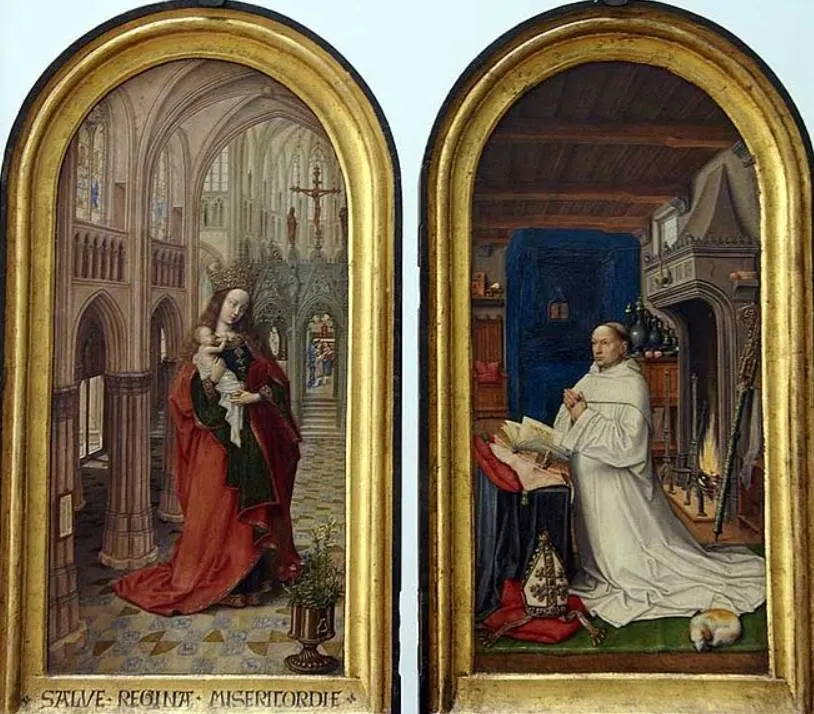
7. How big is Madonna in the Church by Jan van Eyck?
These types of paintings were commissioned by wealthy people from Bruges who wanted a devotional work they could easily bring along. That’s why they are pretty small.
The Madonna in the Church by Jan van Eyck is a small oil on oak panel painting that has dimensions of 31 × 14 centimeters (12 × 5.5 inches).
8. Where is the painting located today?
This Madonna painting by Jan van Eyck has a mysterious history. A description from the 16th century might point to Phillip the Good as the patron but this remains uncertain.
It was only mentioned for the first time in 1851 and it was acquired by the Gemäldegalerie in Berlin in 1874.
The painting was stolen 4 years later in 1877 and since then, the original frame of the painting has been lost. This frame was never recovered but the inscription on it was recorded:
FLOS FLORIOLORUM APPELLARIS – MATER HEC EST FILIA PATER EST NATUS QUIS AUDIVIT TALIA DEUS HOMO NATUS ETCET (The mother is the daughter. This father is born. Who has heard of such a thing? God born a man.)
You can still admire this stunning work of art, minus the original frame, at the Gemäldegalerie in Berlin today.
